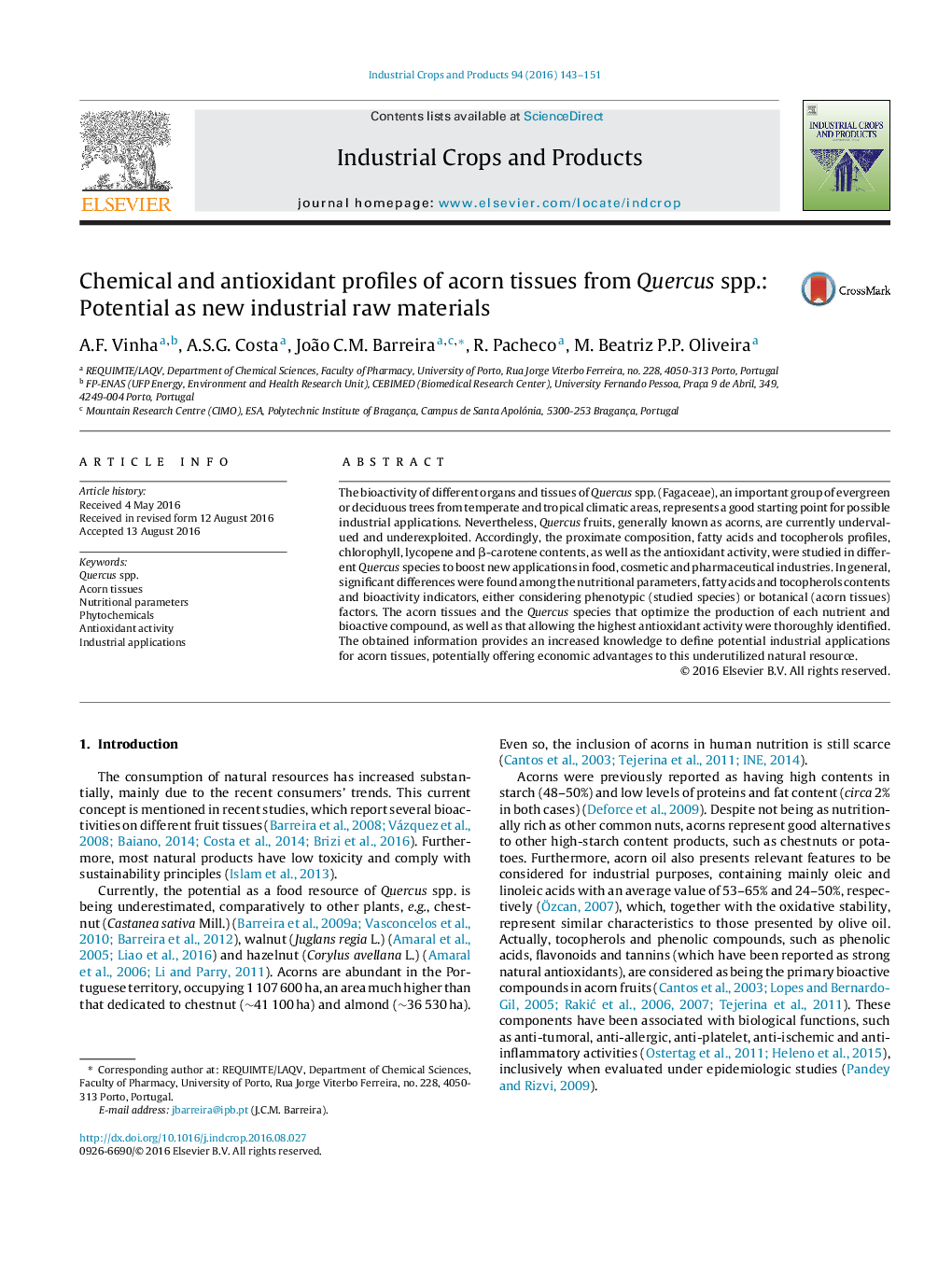| Article ID | Journal | Published Year | Pages | File Type |
|---|---|---|---|---|
| 6375530 | Industrial Crops and Products | 2016 | 9 Pages |
Abstract
The bioactivity of different organs and tissues of Quercus spp. (Fagaceae), an important group of evergreen or deciduous trees from temperate and tropical climatic areas, represents a good starting point for possible industrial applications. Nevertheless, Quercus fruits, generally known as acorns, are currently undervalued and underexploited. Accordingly, the proximate composition, fatty acids and tocopherols profiles, chlorophyll, lycopene and β-carotene contents, as well as the antioxidant activity, were studied in different Quercus species to boost new applications in food, cosmetic and pharmaceutical industries. In general, significant differences were found among the nutritional parameters, fatty acids and tocopherols contents and bioactivity indicators, either considering phenotypic (studied species) or botanical (acorn tissues) factors. The acorn tissues and the Quercus species that optimize the production of each nutrient and bioactive compound, as well as that allowing the highest antioxidant activity were thoroughly identified. The obtained information provides an increased knowledge to define potential industrial applications for acorn tissues, potentially offering economic advantages to this underutilized natural resource.
Keywords
Related Topics
Life Sciences
Agricultural and Biological Sciences
Agronomy and Crop Science
Authors
A.F. Vinha, A.S.G. Costa, João C.M. Barreira, R. Pacheco, M. Beatriz P.P. Oliveira,
